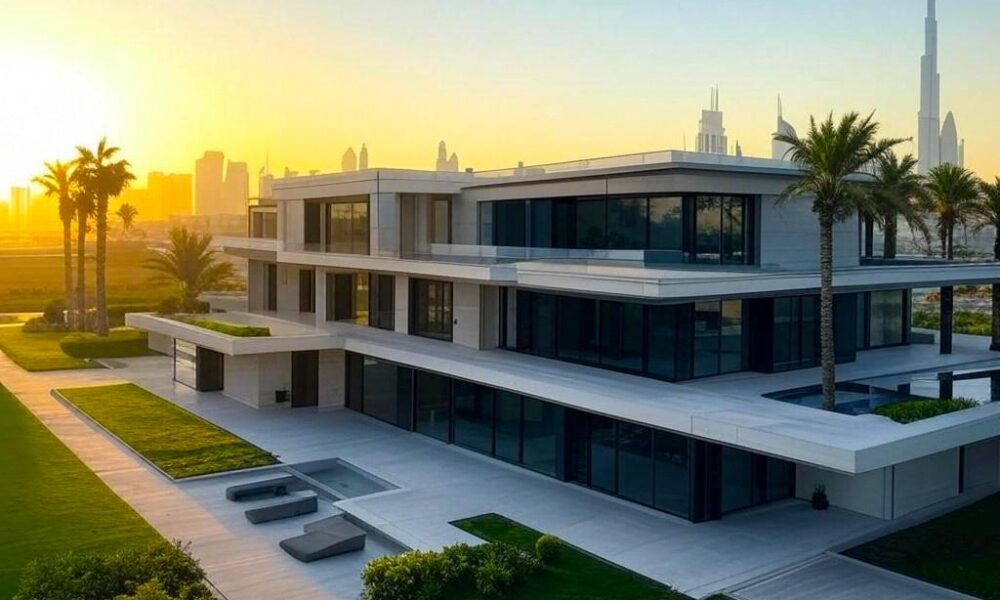Dubai’s Villa Boom: Updated Real Estate Trends for 2025


Dubai, a city known for its opulence and forward-thinking architecture, has seen its real estate market undergo significant transformations in recent years. As we look towards 2025, the market is expected to continue its trajectory of growth, particularly in the villa sector, which has become increasingly attractive to both local and international investors.
Current Market Dynamics
The real estate market in Dubai has been on an upward trend, with 2024 witnessing record-breaking sales transactions reaching AED 517 billion, indicating a robust demand across all property types. Villas have been particularly in demand, with areas like Palm Jumeirah, Emirates Hills, and Dubai Hills Estate becoming synonymous with luxury living. The average price increase for villas in these prime neighborhoods was noted to be around 15% to 18% in 2024, setting a strong precedent for 2025.
Price Growth and Demand: Analysts predict a moderate growth in villa prices by 5-10% in 2025, as the supply of new luxury villas starts to meet demand. Developments like Dubai Creek Harbour and Emaar’s Beachfront are expected to add around 30,000 new residential units, which could help in stabilizing prices by increasing available stock.
Rental Yields: High rental yields are anticipated to persist, especially in popular locales such as Jumeirah Village Circle, where returns could remain around 5-6%. This makes Dubai villas a lucrative option for investors looking for income through rentals.
Luxury Segment: The luxury villa market is expected to see continued interest, with a 35% jump in sales in 2024 attributed to wealthy investors from Europe and Asia. Approximately 28,700 luxury villas are projected to be completed by 2025, with areas like Bluewaters Island potentially seeing a 10-12% increase in price per square foot.
Emerging Areas to Watch
Dubai South and Expo City: These areas are poised for significant growth due to new infrastructure projects like the expansion of Al Maktoum International Airport and the extension of the Dubai Metro’s Blue Line. These developments are expected to drive demand for both residential and commercial properties, with villas in these regions offering attractive investment opportunities.
Affordable Luxury: There’s a noted shift towards more affordable luxury options, especially in communities like Jumeirah Village Circle and Dubai Silicon Oasis, where luxury amenities are offered at more accessible price points, attracting a broader demographic of buyers and renters.
Challenges and Considerations
While the outlook is predominantly positive, potential investors should be aware of several factors:
Supply Surge: An expected increase in new property launches could lead to an oversupply, potentially cooling down the market and affecting price growth. Around 182,000 units are projected to be added to the market between 2025-2026, which might challenge the absorption rate unless demand continues to escalate.
Market Corrections: Despite the growth, there could be slight corrections in certain segments, particularly in areas where the supply might outstrip demand.
Government Initiatives and Market Support
The Dubai government’s proactive approach, including the Real Estate Sector Strategy 2033 and various visa programs like the Golden Visa, continues to bolster the market’s appeal. These initiatives not only encourage foreign investment but also aim at sustainable market growth by focusing on both luxury and affordable segments.
Dubai’s real estate market, with a special focus on villas, is set to maintain its allure in 2025. The combination of strategic urban planning, robust economic fundamentals, and government policies aimed at attracting global capital ensures that Dubai remains a top destination for real estate investment. Whether it’s the allure of luxury living or the prospect of high rental yields, the villa market in Dubai presents numerous opportunities for investors, albeit with considerations for market dynamics and supply management.





